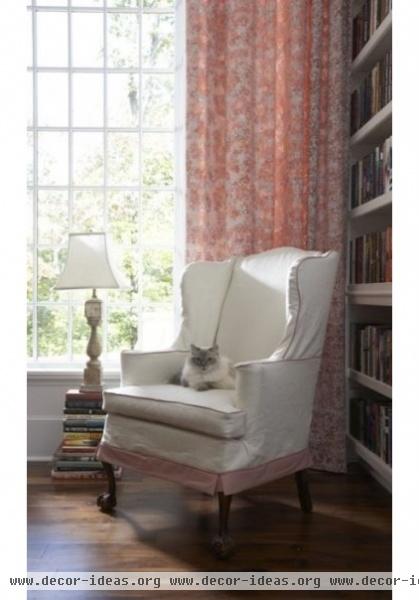What's That Smell? What to Do About Stinky Furniture
http://decor-ideas.org 09/14/2013 16:40 Decor Ideas
I recently moved and was dismayed to discover that the smell that plagued me in my old house had followed me to the new one. The culprit? My sofa.
Upholstery odors are insidious and notoriously difficult to eliminate. “Upholstery is not a consumer-friendly, cleanable item,” says Alec Houle, a 51-year veteran in the upholstery cleaning business, who services the greater Boston area at Alec’s Carpet & Upholstery Cleaning in Abington, Massachusetts.
Despite this, there are steps you can take to evaluate the problem and decide whether professional intervention is needed.

Diagnosing pet odors. If you have pets, an ammonia-based smell indicates the presence of urine, as do telltale yellow stains. If you have a small dog, look for staining around the furniture’s skirt. Cat urine is particularly difficult to treat, both because it’s smellier and because cats like to pee in the crevices of the furniture, where their mishaps aren’t immediately detectable.
If you smell the urine but can’t find the stain, try shining a black light on the piece in a darkened room. (Black lights are available from tool rental companies.)

Other odors from living sources. Another culprit might be dog drool, which contains bacteria that can cause odors or that might react with soil on the furniture to give off odors. (Millie and Gabrielle, shown here, are innocent of any wrongdoing, as are the other pets in these photos.)
And don’t rule out your two-legged friends and yourself: The source could be human sweat, which is most commonly found on the arms of the sofa and where the neck comes in contact with the fabric.

Stain treatment. Once you detect a stain, don’t delay. “The quicker you get to it, the better,” says Mike Hiatt, general manager of D.A. Burns & Sons in Seattle. An over-the-counter enzyme-based cleaner like Nature’s Miracle can neutralize urine stains, and it doesn’t need to be rinsed out, unlike the usual treatments for odor-causing stains.
If the stain is confined to the surface of the furniture, you can try daubing it lightly with a white cotton cloth dipped in warm to hot water and wrung out. You could also use a solution of 10 percent white vinegar and 90 percent water, or combine a teaspoon of mild liquid detergent with 2 cups of water.

Cleaning caveats. Be aware that even plain water can leave a ring, depending on the fabric. Consult the cleaning instructions that came with your furniture before proceeding with any home treatment — even water.
Only water-based cleaning solutions are effective on pet urine, because urine is water based. If the urine has soaked through into the cushion, you might need to clean the upholstery and replace the inside cushion.
Tip: If you're shopping for furniture and own pets, consider purchasing pieces with washable slipcovers.

Smells from other sources. Mustiness is common with secondhand furniture and pieces kept in a basement or storage facility. The humidity in those spaces can cause bacteria or mold to embed itself deep inside the frame or stuffing.
“If it’s a musty odor, typically you’re not going to get rid of that,” says Houle. Cigarette odors are equally pernicious. Before calling a professional, leave the furniture on a porch on a dry day to see if that helps.
Houle takes a dim view of the fabric deodorizers that have become popular in recent years, claiming they simply mask odors and don’t get to the root of the problem. More effective are antimicrobials, such as those by Microban, but even those are most useful after a professional cleaning.

Calling the pros. There are two major types of professional upholstery cleaning: wet cleaning and dry cleaning. Houle estimates that 98 percent of upholstery cleaners use the wet method, as it is generally more effective and less toxic, although it can cause fabric shrinkage, bleeding or stiffness if not correctly executed. “If all the proper steps are taken, the results can be superior,” he says.
Dry cleaning uses a solvent, so colors and fabrics are protected. But the surroundings are not: respirators and ventilation are required, and steps have to be taken to minimize the chance of explosions.
For both types of treatment, the upholstery cleaner will come to your home. The average cost ranges from about $75 to $100 for a sofa, $60 to $75 for a love seat and $40 to $50 for a chair.

No guarantees. Hiatt says professional cleaning will usually improve the situation. But there are no guarantees it will solve it, so you are always taking a risk that you could spend the money and the smell might still be there. Or your spouse might not smell it but you will.
“The tricky thing about odor,” notes Hiatt, “is that it’s in the nose of the beholder.”
More: Baking Soda: The Amazing All-Natural Cleaner You Already Own
Related Articles Recommended












